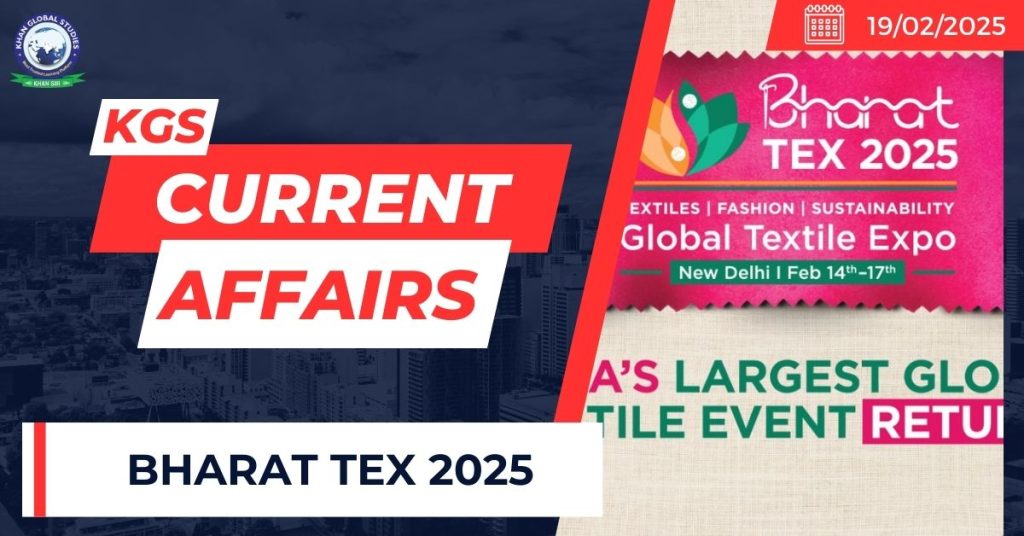Context:
Recently, India’s largest global textile event Bharat Tex 2025, was held at Bharat Mandapam, New Delhi.
- The event covered 2.2 million square feet, with over 5,000 exhibitors and 1,20,000+ trade visitors from 120+ countries, including CEOs, policymakers, and industry leaders.
- It served as a platform to accelerate the government’s “Farm to Fibre, Fabric, Fashion, and Foreign Markets” vision.
India’s Textile Industry

- India is the 6th largest textile exporter globally (1st China, 2nd Bangladesh, 3rd Vietnam), contributing 8.21% to total exports in 2023-24.
- Holds a 4.5% share in global trade, with the U.S. and EU accounting for 47% of India’s exports.
- Directly employs over 45 million people and supports 100 million people indirectly, including women and rural workers.
- Supports initiatives like Make in India, Skill India, Women Empowerment, and Rural Youth Employment.
Government Schemes to Support the Textile Sector
- PM MITRA Parks Scheme: 7 mega textile parks with USD 10 billion investment to create an integrated textile value chain with world-class infrastructure.
- PLI Scheme: INR 10,683 crore (~USD 1 billion) incentive to boost manufacturing of MMF fabrics, apparel, and technical textiles.
- Samarth Scheme: Demand-driven program to address skill gaps across the textile value chain, with additional state-level support.
- National Technical Education: Mission to promote research, innovation, skill development, and market development in technical textiles, aiming for USD 300 billion by 2047.
- Liberal State Policies: Capital, wage, and skilling incentives from state governments to support the textile industry.
- Startup Support: Startups were granted INR 50 Lakhs each for innovations in technical textiles, plus INR 6.5 crores for specialized courses in geotextiles and sports textiles at IIT Indore and NIT Patna.
- Skill Development: Industry-focused training courses in medical, protective, mobile, and agricultural textiles approved for development by SITRA, NITRA, and SASMIRA.
Industry Focus
- Intelligent Manufacturing: Revolutionizing textile production with advanced technologies like AI, IoT, automation, and analytics to improve efficiency and innovation.
- Technical Textile: Specialized fabrics for sectors like automotive, aerospace, healthcare, and construction, positioning India as a leader in this field.
- Home Textile: Rich traditions and craftsmanship in regions like Gujarat (embroidery) and Kashmir (woolen shawls and rugs) reflect India’s textile expertise.
- Fabrics: India is a major producer and exporter of fabrics, with large-scale industrial manufacturing and small-scale artisanal production across key hubs like Gujarat, Tamil Nadu, Punjab, and West Bengal.
- Apparel & Fashion: A major economic driver, blending traditional and modern styles, the government focuses on promoting synthetic textiles, MMF apparel, and high-value garments to boost growth in the sector.
- Handloom: Renowned for intricate textiles like Banarasi silk, Kanjeevaram silk, and Jamdani, reflecting regional craftsmanship and cultural heritage.
- Handicrafts & Carpets: A significant sector known for handmade textiles and carpets, each region offering unique traditions and techniques.

